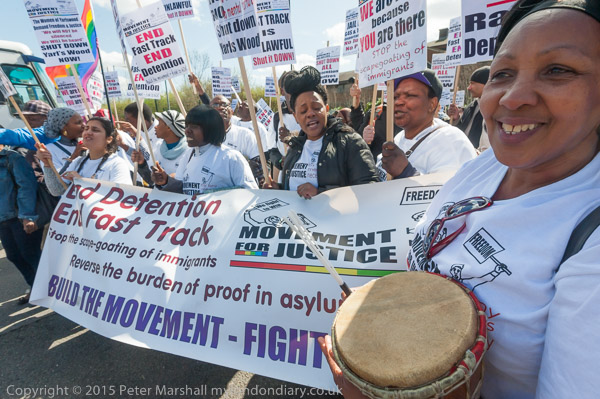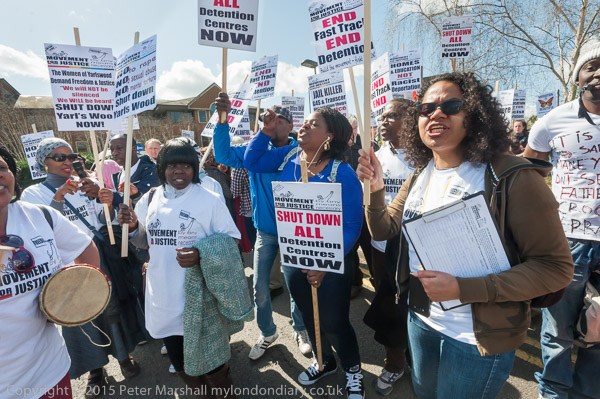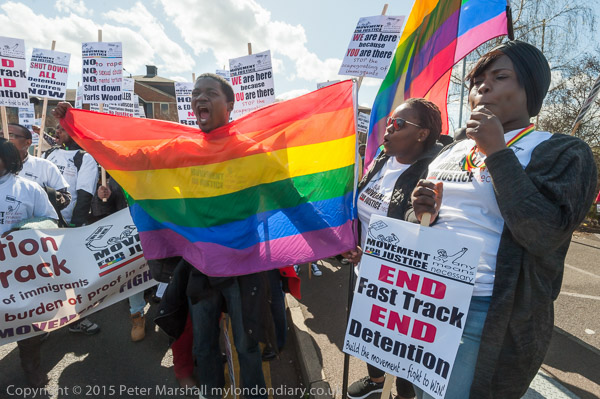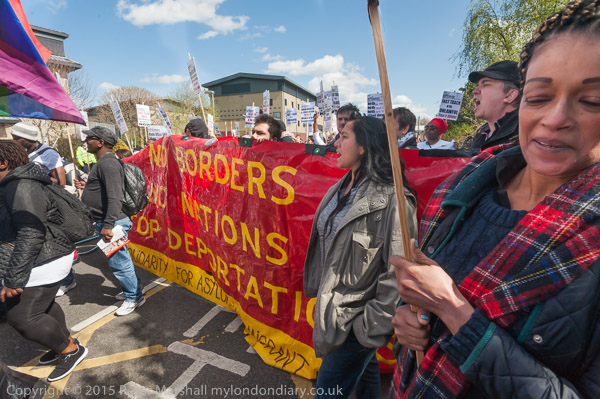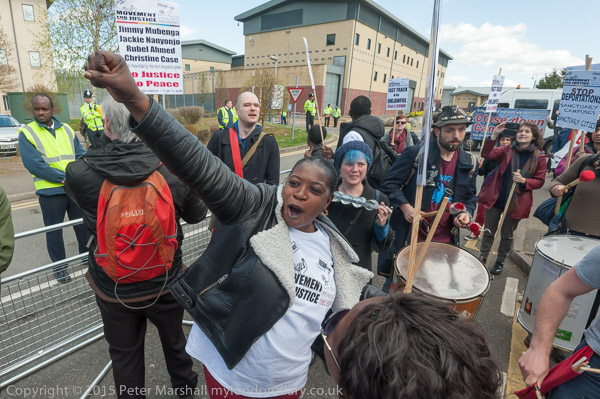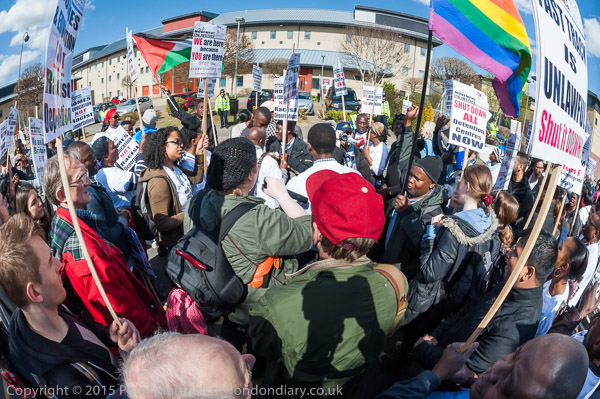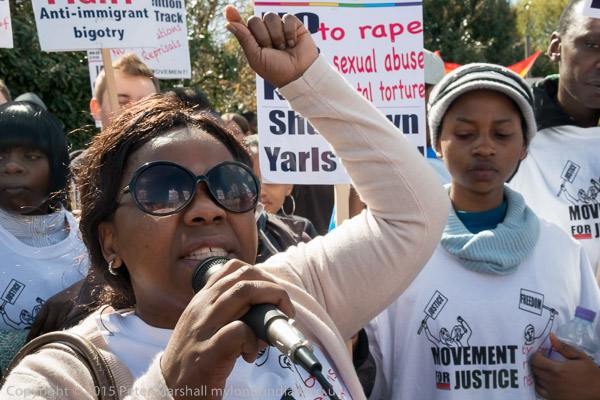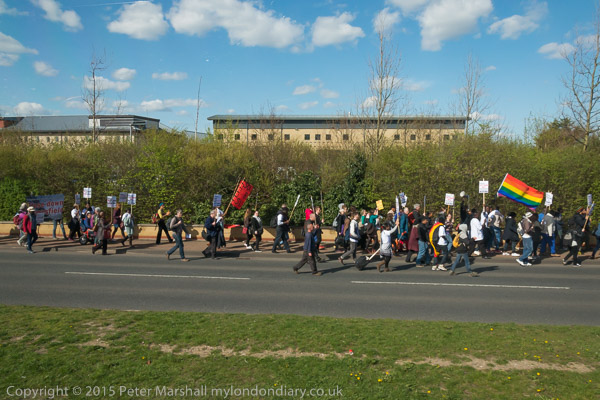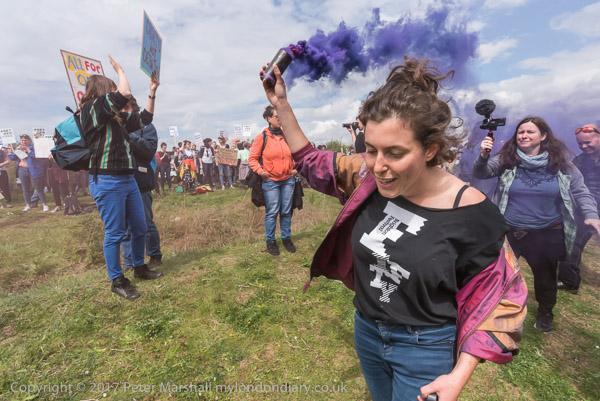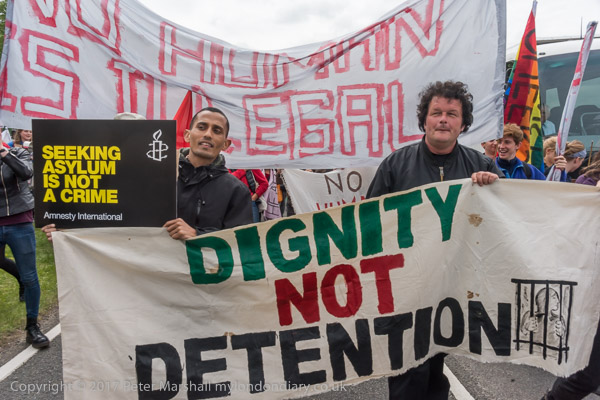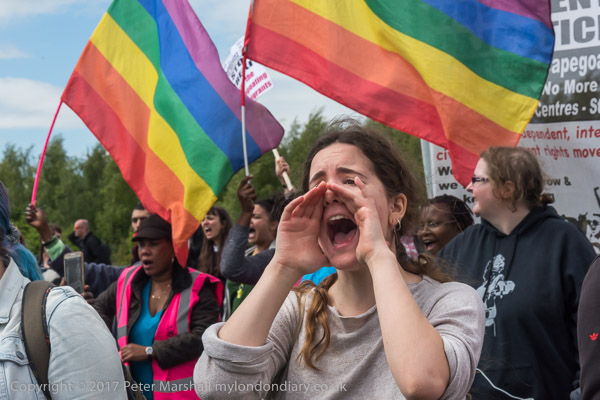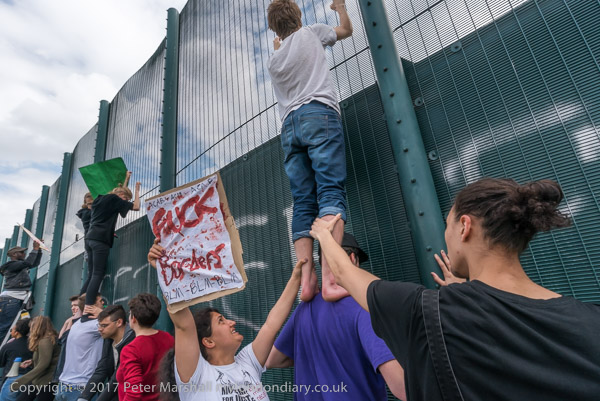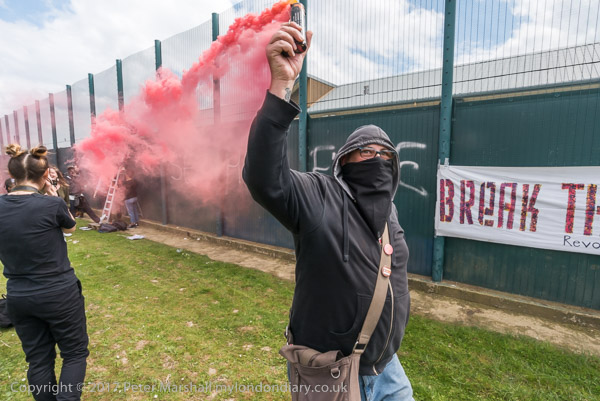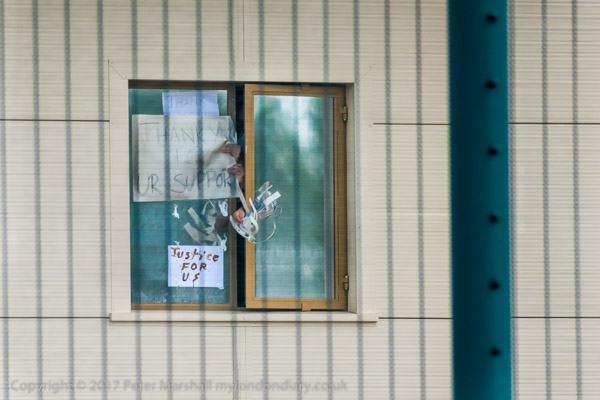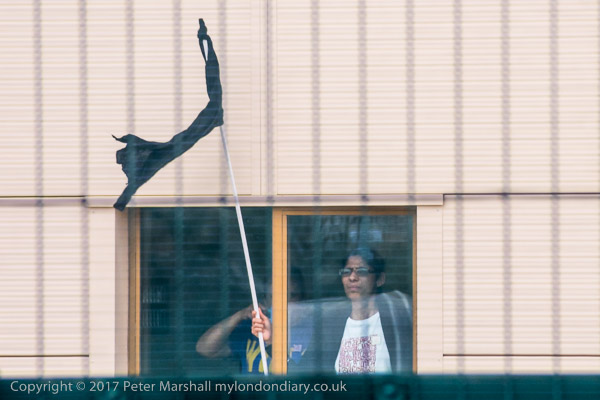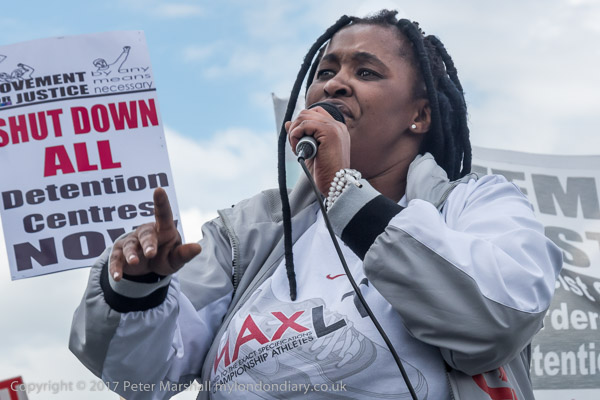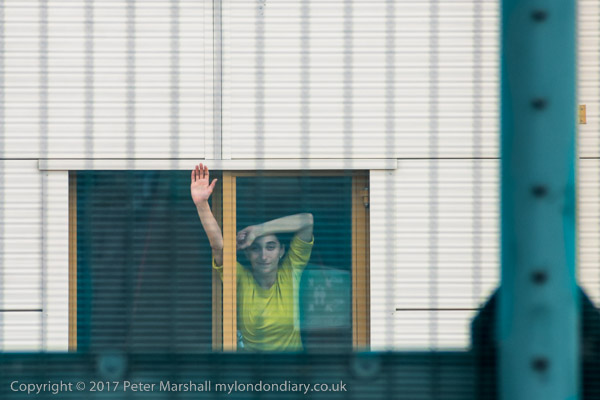Shut Down Yarl’s Wood: Saturday 10th September 2016 was one of quite a few protests I photographed at the Immigration Detention Centre at Yarls Wood, and it followed a similar pattern to the others.
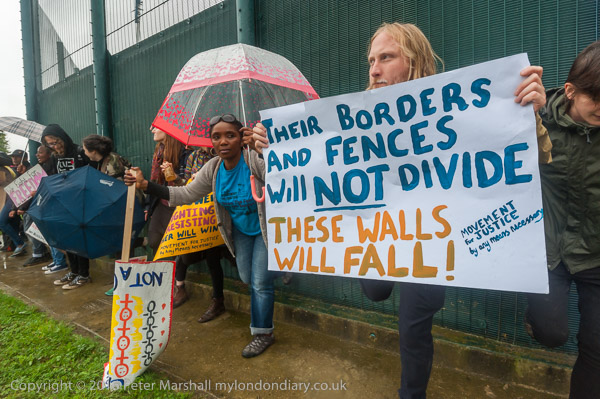
The main difference to most other occasions I went there was the weather, with some heavy and rather persistent rain, which failed to dampen the energy of the protesters but did make the event more hazardous.
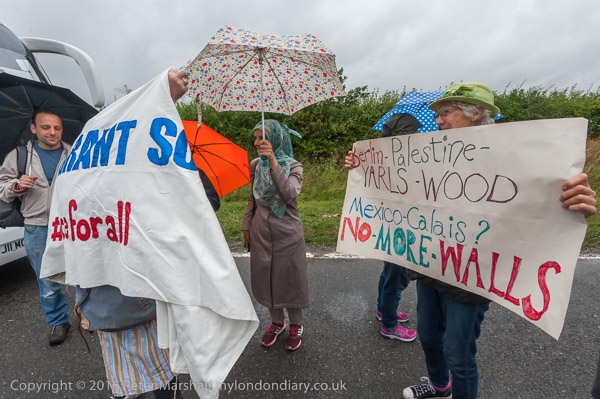
The 20ft high fence around the centre – essentially a prison – is at the bottom of a slope in the field where the protest took place. From higher up the slope you can see the upper floors of one of the detention blocks though the top 10ft of thick wire metal fencing.
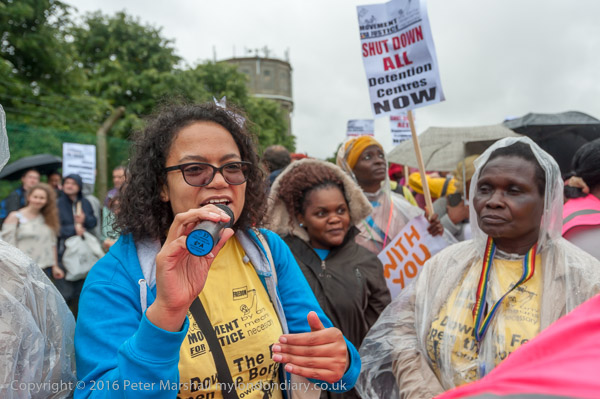
Around the base of the fence is a concrete base several feet wide, and in front of that is a short level grass-covered section before the ground rises. In the rain the level section became waterlogged mud and climbing the slope became extremely treacherous, and nearly impossible and I had to walk some yards to one side where the slope was less steep.

Between speeches over the public address system the protesters had brought so the women inside the prison could hear them clearly – even those who the prison staff had prevented from coming to the rooms facing the fence – people kicked and banged the lower 10 feet of metal sheet fencing – which made a very satisfactory loud noise.
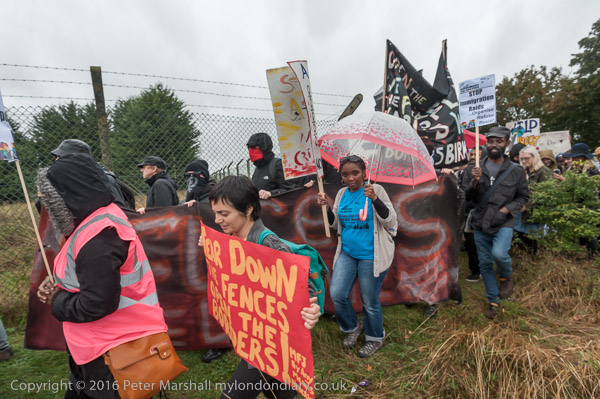
My account on My London Diary was short – so here it is in full, although there is more information in some of the captions to the many images in the post there:
Hundreds of protester braved persistent rain to stand for several hours in a protest organised by Movement for Justice waving and shouting support to the women asylum seekers held indefinitely inside Yarl’s Wood, who responded enthusiastically by shouting and waving back from the prison blocks behind the high fence, hindered by windows that hardly open.
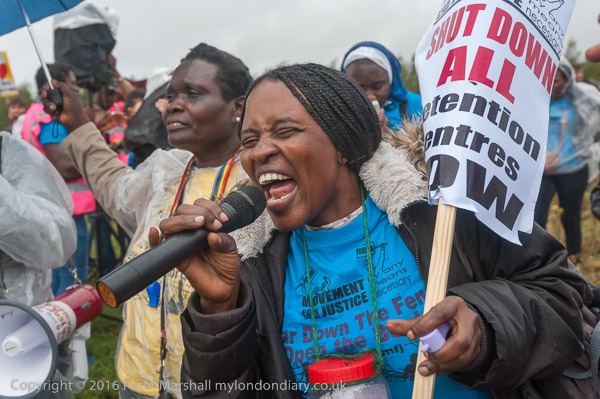
Several spoke to the protesters on their mobile phones, some telling how Serco security guards had prevented them from coming to the windows and were threatening those who greeted the protesters with solitary confinement, and there were speeches by a procession of women who had been held, some for a year or more, inside the immigration prison.

Immigration detainees are held ‘indefinitely’ with no release date until their cases are determined. One of those then inside was 42-year-old Mabel Gawanas who had then been held in Yarls Wood for over 2 years, having fled Namibia after being tortured and raped. She has an an underage British daughter and several health problems. She was eventually released after being held one day short of three years.
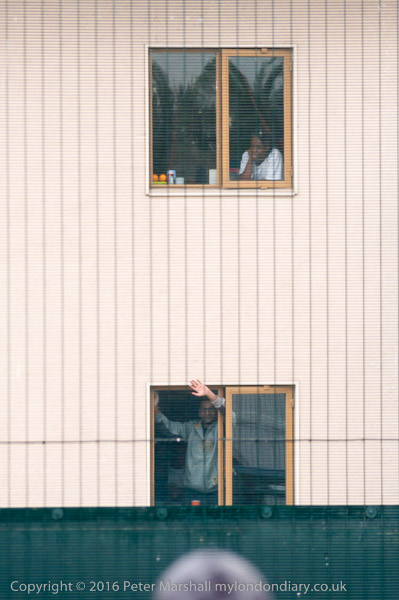
Many of those who spoke had been detained inside Yarls Wood – and were able to speak to friends still inside and to encourage them to keep up the fight. Most who do fight will succeed eventually, but too many who should be granted asylum are being deported – and often back into very dangerous situations.
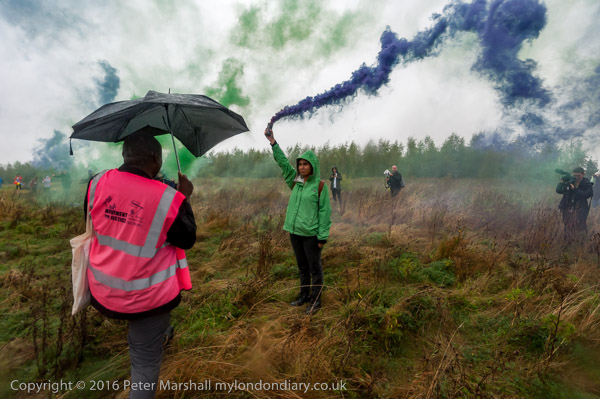
By the time the protest was coming to an end my boots were encased in heavy clay mud. I scraped off most of it on the long walk back to the coach, but still had to remove my boots and put them in a plastic bag before getting into the coach in my socks. But I was pleased with many of the pictures I had made and I think the bad weather brought out the best in the protesters.
Many more pictures at Shut Down Yarl’s Wood.
Flickr – Facebook – My London Diary – Hull Photos – Lea Valley – Paris
London’s Industrial Heritage – London Photos
All photographs on this page are copyright © Peter Marshall.
Contact me to buy prints or licence to reproduce.
